Learn how to cook beef tongue to get tender meat every time! This easy step-by-step guide will show you that cooking tongue to achieve mouthwatering texture and amazing flavor is simple. Plus, you'll learn how to clean the beef tongue quickly and have the skin peel off without much effort or time.
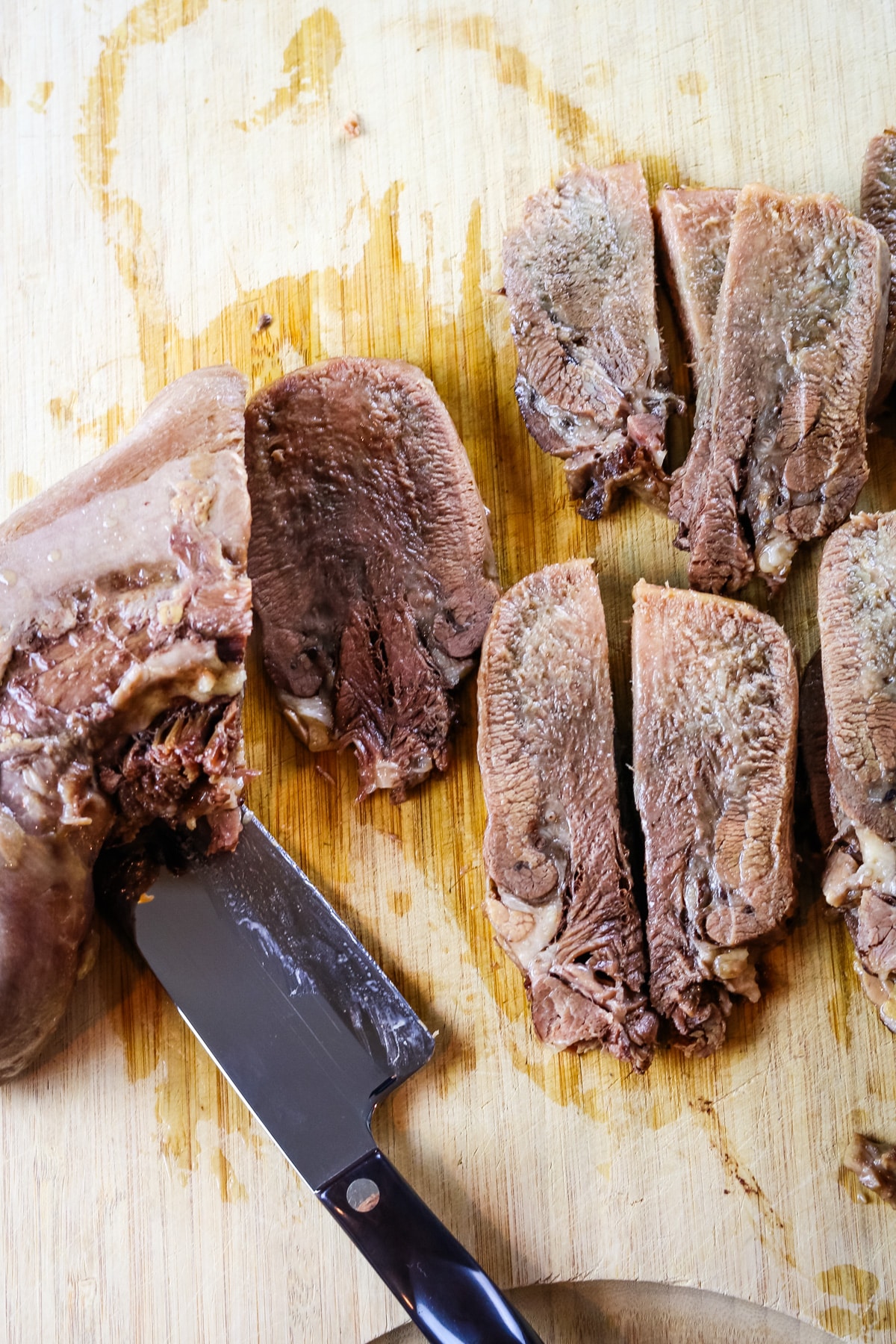
Have you heard of the nutritional benefits of beef tongue (and other organ meats for that matter) but don't know where to start?
Well, we're diving headfirst into cooking beef tongue and I promise, this easy Instant Pot method will ensure consistent results every time. Tender meat. Skin that peels off so effortlessly. And all with very little hands-on time.
Whether you're a seasoned cook or a curious beginner, this guide on how to cook beef tongue is your one-stop destination for everything you need to know about preparing, cooking, cleaning, and enjoying this nutrient-packed delicacy. So be intimidated no more and get ready to make the most mouthwatering beef tongue!
Jump to:
- Why Learn How to Cook Beef Tongue
- Ingredients to Cooking Beef Tongue
- Make it Nutrient Dense
- How to Clean Beef Tongue
- How to Cook Beef Tongue in Pressure Cooker
- How to Cut Boiled Tongue
- Helpful Tips for Cooking Beef Tongue
- Tools & Links to Cook Beef Tongue
- Serving Suggestions
- Storage and Reheating Instructions
- FAQs
- Printable Recipe
Why Learn How to Cook Beef Tongue
Incorporate nutrient-dense organ meats - Offal cuts of meat are rich in essential nutrients like iron, zinc, and B vitamins. Eating beef tongue routinely ensures a well-rounded, nourishing diet.
Delicious, tender texture every time - The Instant Pot makes this foolproof. You will get a mouth-watering, tender texture every time.
Versatile cut of meat to use in many dishes - Switch out your ground beef taco meat with beef tongue or add it to sandwiches or tacos. The options are endless on how you serve this cut of meat.
💭Fun Fact: Beef tongue is often an overlooked cut of meat but it fits the nose-to-tail philosophy perfectly. It reduces food waste and promotes sustainable and holistic animal care.
Ingredients to Cooking Beef Tongue
Learn how to cook beef tongue using 3 basic ingredients, plus salt and pepper. This easy recipe is made in the pressure cooker with very little hands-on time.
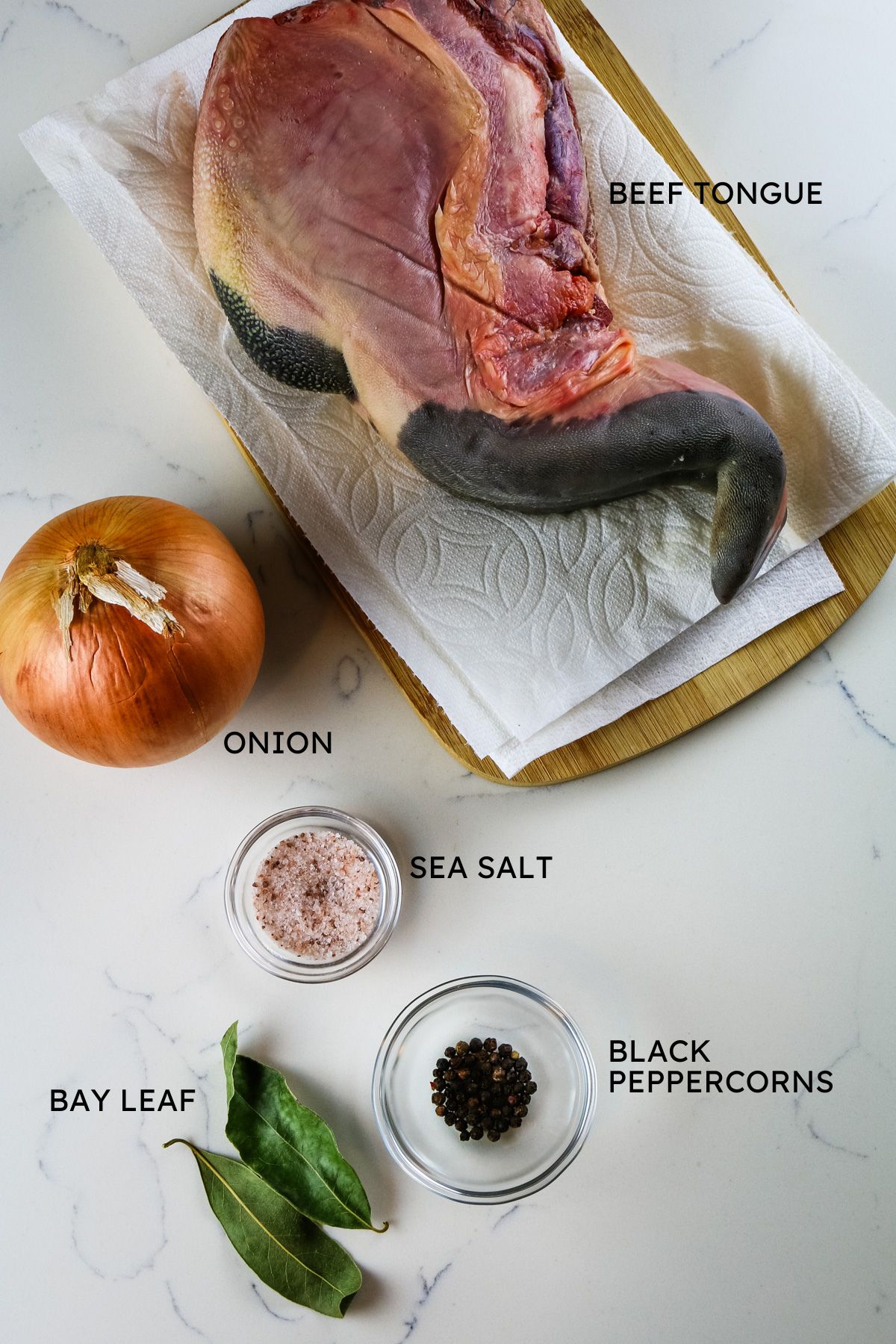
- Beef tongue: When buying beef tongue, look for one with rich red color at the base of the tongue. While beef tongues vary in size, they should still feel relatively heavy for their size. A heavier beef tongue indicates good muscle development. If it's packaged, inspect the package for any signs of damage, leakage, or excessive ice crystals.
- Onion: Yellow, white, or red onion will work as we're just adding it for flavor.
- Seasonings: A simple blend of seasonings including sea salt, black peppercorns, and bay leaves will infuse amazing flavor yet still keep it mild so it won't overpower other flavors in cooked tongue dishes.
See the recipe card for exact quantities.
Make it Nutrient Dense
Staying true to the heart of what Prepare and Nourish is all about, there are ways to ensure you get the maximum nutrition as you are cooking beef tongue. Even though it's an incredibly simple recipe, you can take purposeful steps to turn this into a nutrient-dense meal.
Source beef tongue from grass-fed cow. This will ensure maximum nutrition. My favorite sources for grass-fed beef are your local farmer's markets. But when that's not accessible, Wild Pastures and US Wellness Meats both regularly carry good quality cow tongue.
Season appropriately. Cooking beef tongue is very similar to making chicken broth or beef bone broth. Use mineral-rich sea salt and filtered water to get maximum nutrition.
How to Clean Beef Tongue
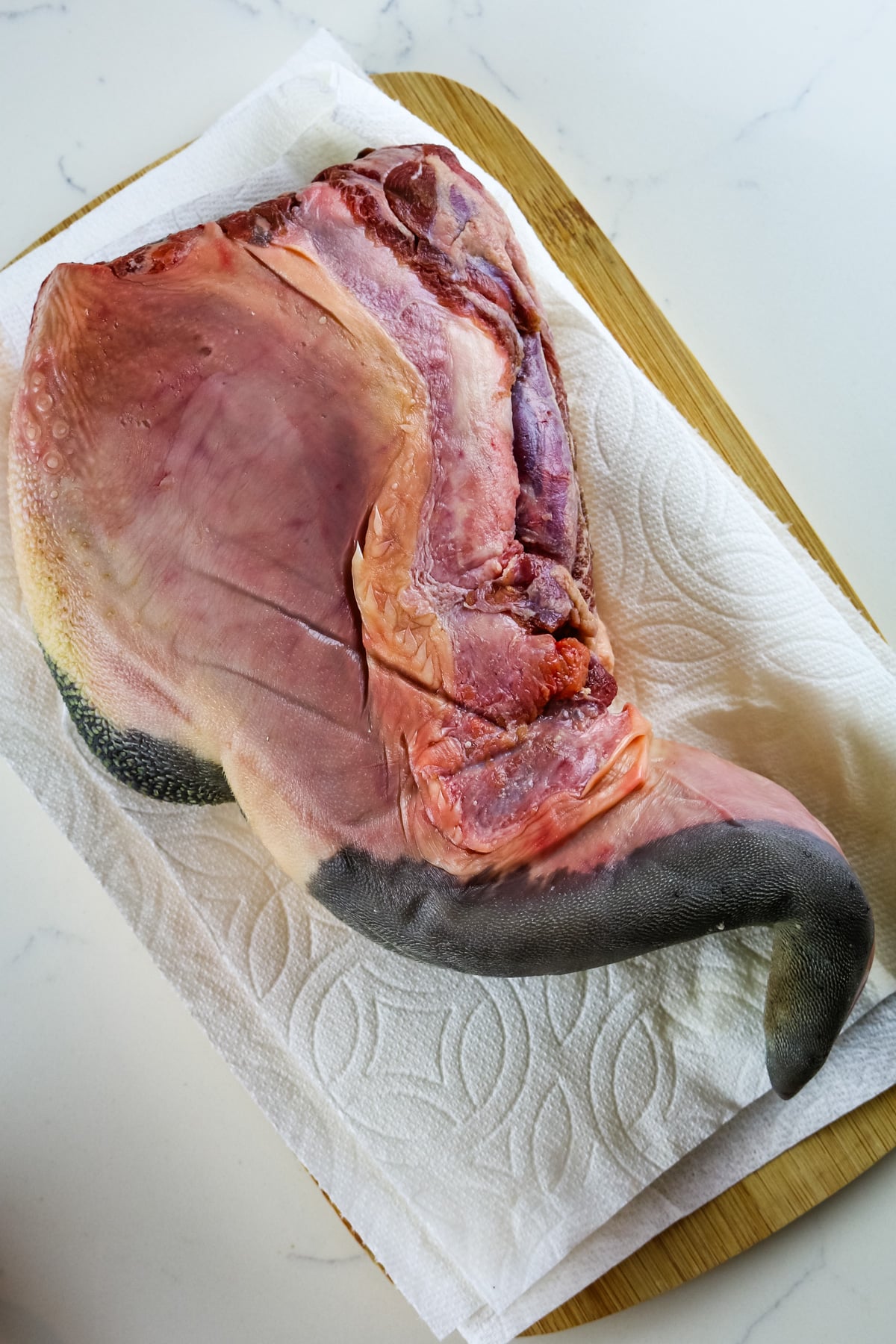
Here's the great thing about cooking beef tongue in the Instant Pot. There's not much cleaning to do. The easiest way to clean beef tongue is to rinse it under running cold water to remove any residue and pat it dry with paper towels.
Then, after it cooks, the skin easily separates from the underlying muscle tissue.
You'll be amazed how incredibly easy it is to clean beef tongue after it has been sufficiently cooked. Don't attempt to remove the skin before that. You'll be majorly disappointed and frustrated.
Cooking causes a change in the texture of the beef tongue, allowing the skin and muscle fibers to break down. As a result, this makes the skin more tender and less resistant.
If you find that the skin is still a little stubborn in some parts, it's possible it wasn't cooked long enough, particularly if your beef tongue is on the larger side. If that's the case, you can either use a knife to carefully remove it or pop the tongue back in the pressure cooker and cook for an additional 10-15 minutes. Be sure to take note for next time.
How to Cook Beef Tongue in Pressure Cooker
The complete printable recipe is below in the recipe card for your convenience along with nutrition facts.
The recipe for cooking tongue is very straightforward. Add everything to your Instant Pot or pressure cooker and set it to cook. Cleaning it is just as easy. Check out how it's done in these step-by-step instructions.
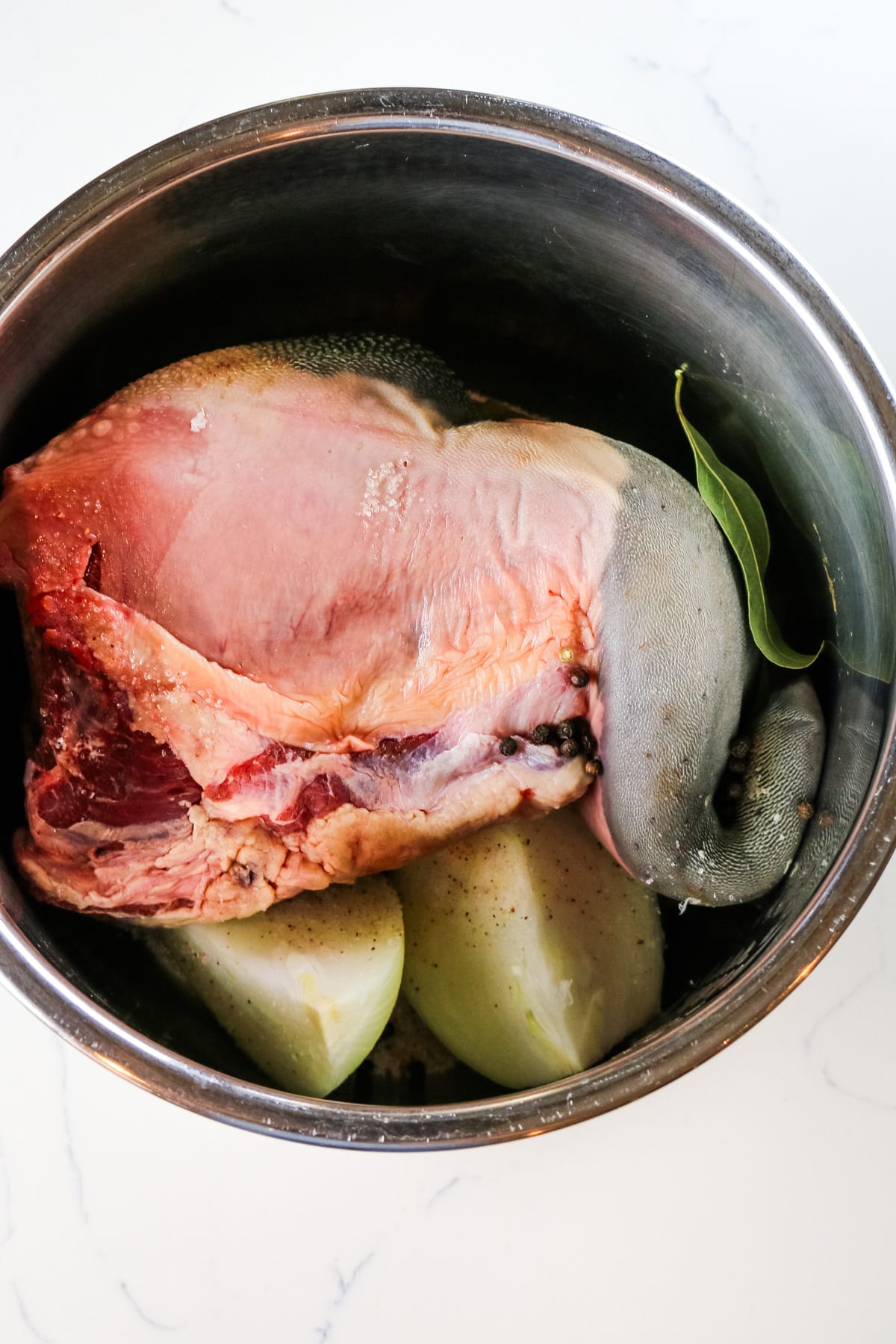
Step 1. Add to pot
Add peeled and quartered onion, bay leaves, peppercorns, salt, and beef tongue to the Instant Pot inner pot. Fill with enough water to cover all contents.
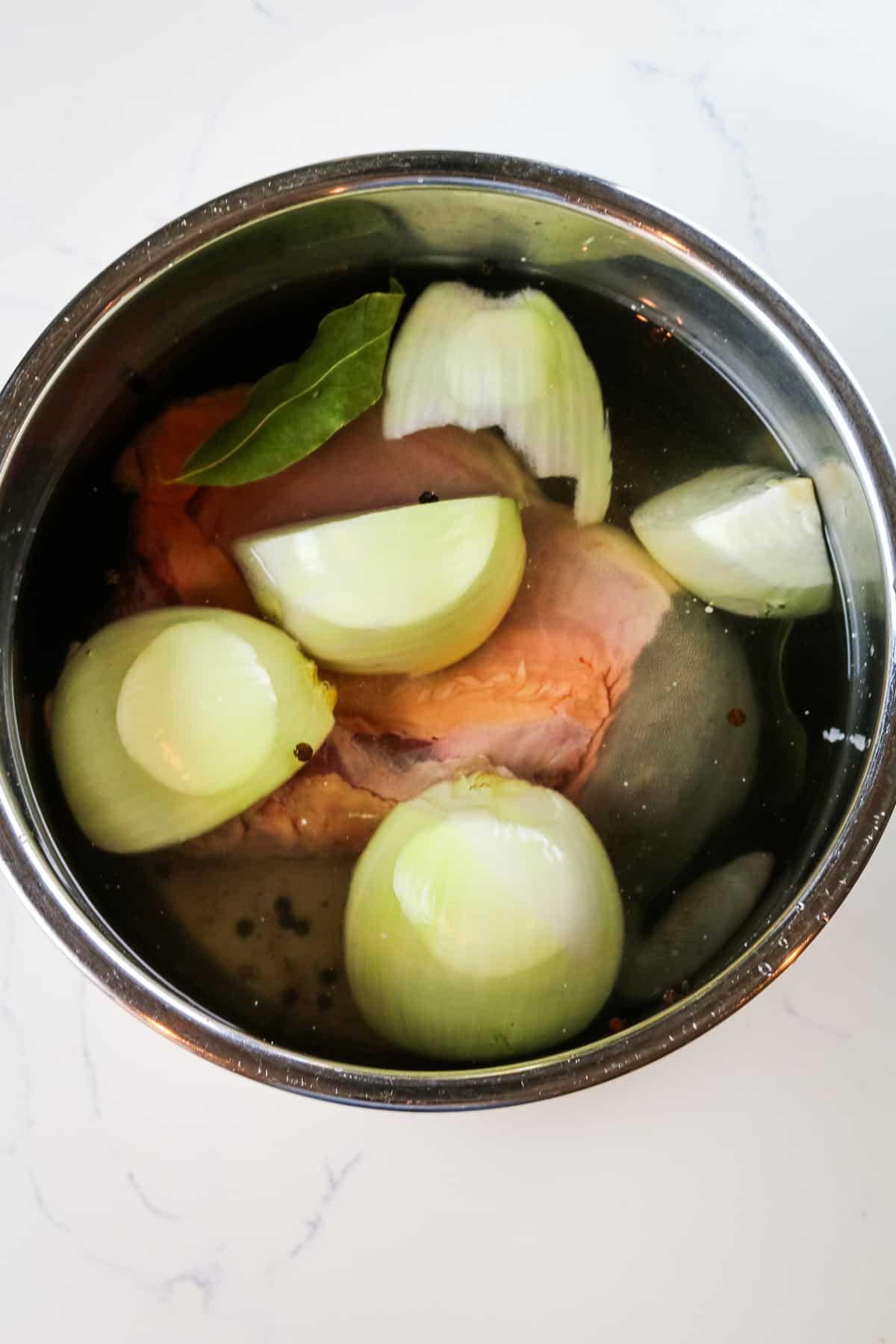
Step 2. Cook on manual
Place the inner pot in the Instant Pot, close it, and set the safety valve to the sealing position. Cook on manual for 90 minutes, followed by natural pressure release (NPR).
💭Pro tip: Depending on the size of your beef tongue and how much liquid you added, your natural pressure release (NPR) time can be up to 45 minutes. Don't try to rush the process by using quick pressure release (QPR).
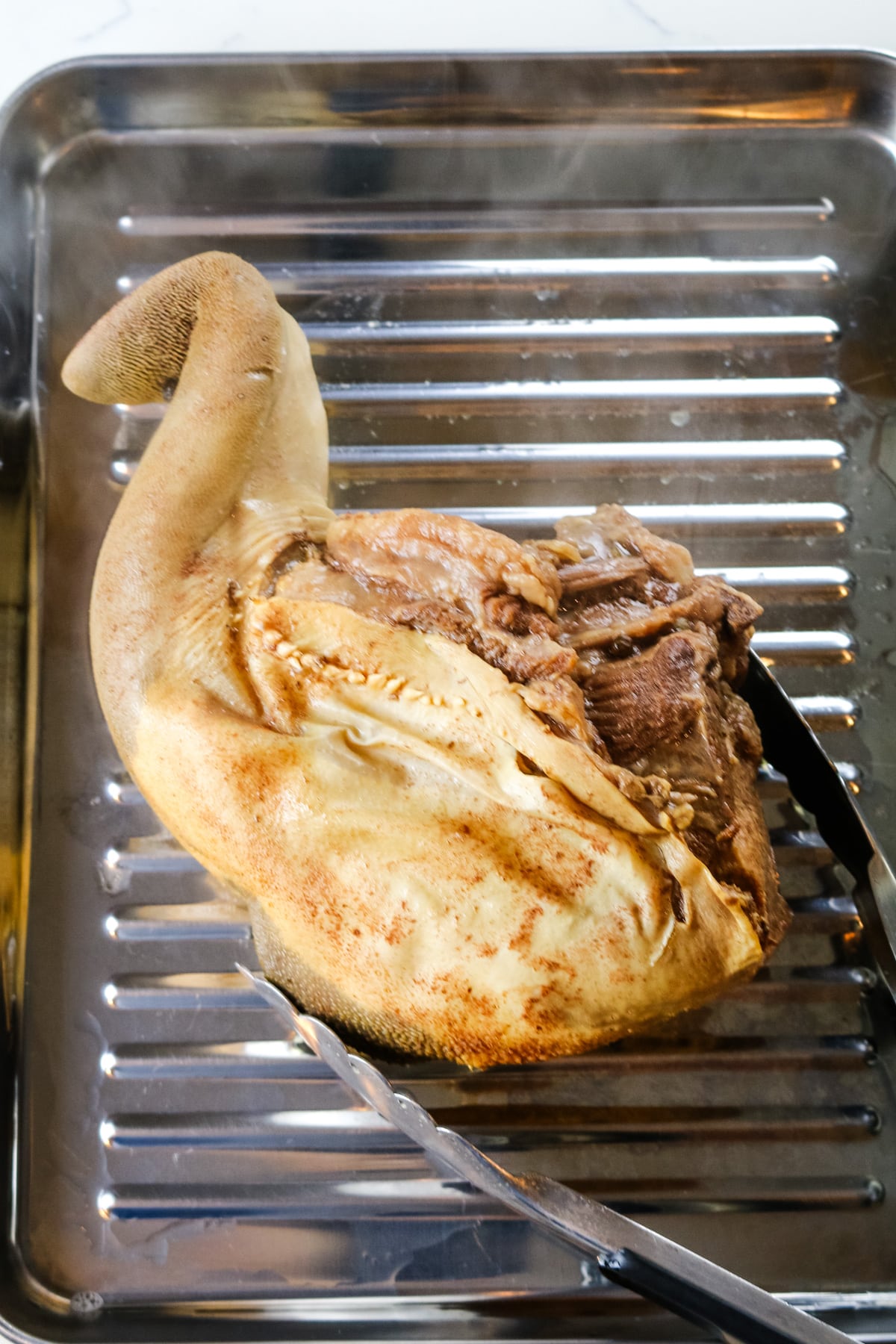
Step 3. Transfer the tongue
When the safety pin is down, carefully open the lid. Remove the beef tongue using a pair of tongs and transfer to a rimmed quarter baking sheet. Let the cow tongue rest for a few minutes.
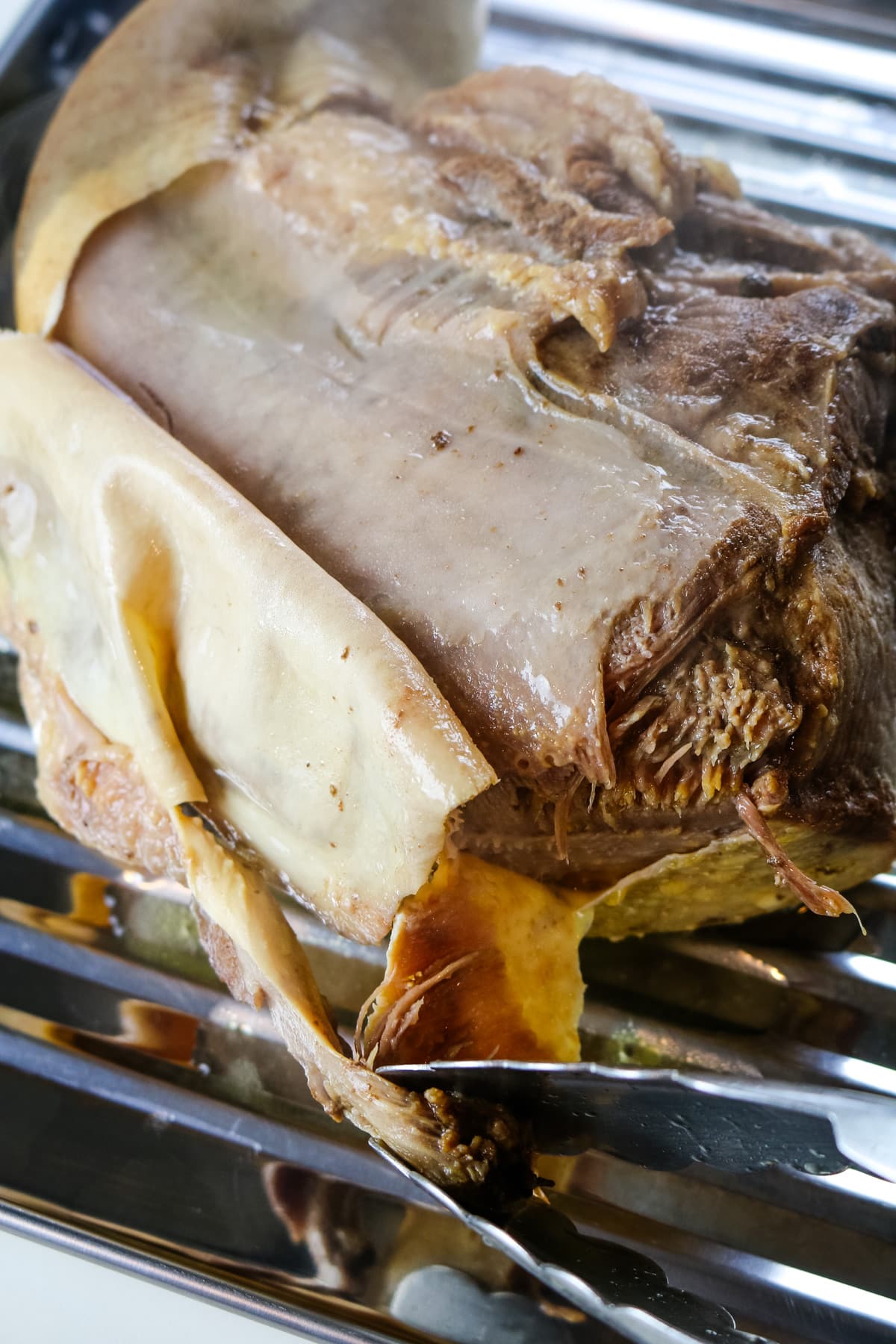
Step 4. Remove the skin
Starting at the base of the tongue, carefully peel away the skin using the tongs and work your way toward the tip of the tongue.
💭Pro tip: When cooked sufficiently, the skin on the beef tongue should easily release from the meat. Some parts may require the use of a paring knife but there should be little to no resistance.

Step 5. Discard and process
Separate the skin from the meat. Discard the cow tongue skin and process the beef tongue based on how you want to use it in recipes.
You can discard or strain the tongue broth and use it in soup recipes.
How to Cut Boiled Tongue
Once you have cooked the beef tongue, consider how you want to use it. Do you want to shred it like roast beef or cut it into cubes or strips for easy browning?
How to shred beef tongue:
For shredded beef, using your fingers or two forks, gently separate the cooked muscle fibers starting at one end of the tongue and work your way across the meat.
Shredding beef tongue is easier when it's still warm.
How to cut beef tongue:
For cubed, diced, or strips of beef tongue, allow the cow tongue to cool completely. If time permits, chill it in the refrigerator for a few hours. This will help with precise cutting.
Using a sharp chef's knife, cut slices of beef tongue to your desired thickness against the grain (perpendicular to the direction of muscle fibers). Then line the strips and cut crosswise to make diced beef tongue. Or leave as strips.

Helpful Tips for Cooking Beef Tongue
Mind the excess fat - You may come across visible pockets of excess fat or gristle as you shred or cut the beef tongue. You can trim them away using a knife or kitchen shears and use them for another purpose. Or leave them and incorporate them into your beef tongue recipe.
Get tender beef tongue - Cooking the cow tongue low and slow and is key to achieving tenderness. Avoid overheating it, as this can cause the meat to become tough and dry. An Instant Pot or slow cooker is the most reliable way to get a consistently tender beef tongue every time.
Enhance flavor - Feel free to experiment and add other flavorful ingredients like hot peppers for a spicy kick or vegetables like carrots, leeks, fennel, or celery.
Tools & Links to Cook Beef Tongue
Below are some affiliate links that may be helpful to you as you cook beef tongue. You can find some of these items cheaper at your local store, but having a link helps you know what you're looking for.
- Tools: Instant Pot, chef knife, cutting board, stainless steel baking sheet to catch all liquid in the tongue
- Ingredients: unrefined sea salt, whole peppercorns, bay leaves
Serving Suggestions
How you serve beef tongue is only limited to your imagination. Serve boiled tongue how you would another cut of beef. Add it to burritos, as a protein to salads, or to sheet pan hash browns.
We love serving this boiled tongue by crispying it up in butter over medium heat. You can see the complete beef tongue recipe here with tips and tricks on how to jazz up this organ meat and take it from good to great.
Another favorite way to enjoy beef tongue is in lengua tacos or beef tongue tacos.
Pressure Cooker Beef Tongue pairing suggestions
- Perfectly Crispy Shredded Hash Browns in Air Fryer15 Minutes
- Roasted Red Cabbage Steaks with Garlic35 Minutes
- Air Fryer Roasted Butternut Squash15 Minutes
- Instant Pot Buckwheat27 Minutes
Storage and Reheating Instructions
How long does boiled tongue last in the refrigerator?
To store: When the cooked tongue has completely cooled down, transfer it to an airtight container and store in the fridge for up to 4 days.
Storage containers: These glass snap containers are perfect for cooked beef tongue.
To freeze: Beef tongue freezes beautifully. I recommend cutting it into thin tongue slices and layering them in a freezer-safe container with parchment paper separating the layers. When ready to enjoy again, remove one layer of sliced thin tongue by pulling the parchment sheet and thaw in the refrigerator overnight.
To reheat: The best way to reheat beef tongue is to brown it in a stainless steel skillet over medium-high heat with butter or avocado oil.
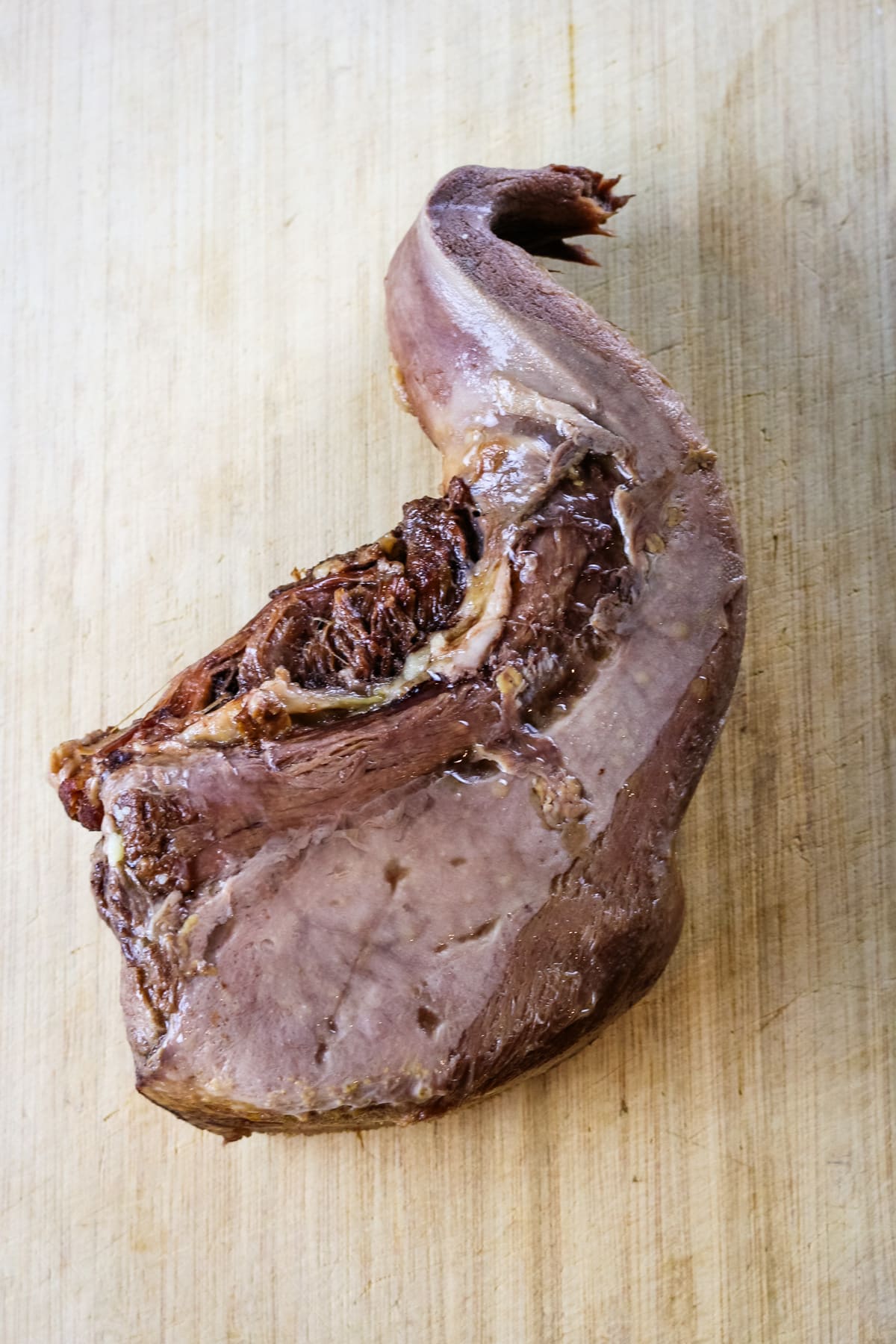
FAQs
This will depend on the size of the beef tongue. But generally, you want to cook it in the pressure cooker for 30 minutes per pound of beef tongue. I usually cook it for at least 60-90 minutes to ensure it comes out fork tender and easy to peel.
Yes! Add all ingredients and cover with enough water to keep everything submerged. Cook on low heat for 8-10 hours, or until it's fork tender and the skin easily separates from the muscle tissue. You may need to adjust cooking time based on the size of the tongue.
You can strain the beef tongue broth and use it as a flavorful base for soups, sauces, or gravies. You can also use it as stock in other recipes, much like chicken broth or beef bone broth.
Looking for more related recipes? Here are some ideas:
Did you make this? Please leave a ⭐ recipe rating in the recipe card below and leave a review in the comments. Thank you!💚
Printable Recipe
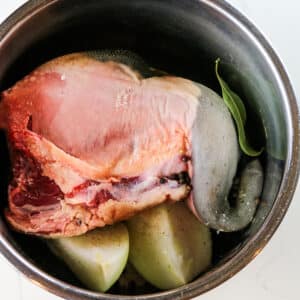
How to Cook Beef Tongue in Instant Pot
Equipment
Ingredients
- 3 pounds beef tongue
- 1 yellow onion
- 2 bay leaves
- 1 teaspoon black peppercorns
- 1 tablespoon sea salt
- enough water to cover the beef tongue
Instructions
- Add: Peel the onion and cut it into quarters. Add beef tongue, quartered onions, bay leaves, peppercorns, and salt to the Instant Pot inner pot. Pour enough water to cover the beef tongue and the rest of the ingredients.
- Cook: Place the inner pot in the Instant Pot, cover, and set the safety valve to sealing position. Cook on manual for 90 minutes. Then allow natural pressure release until the safety pin is down.
- Rest: When safe to open the Instant Pot, carefully remove beef tongue and transfer to a rimmed baking sheet or platter. Let the cow tongue rest for a 5-10 minutes.
- Peel: Using a pair of tongs, carefully pull away the skin, starting with the base of the tongue and working your way towards the tip. The skin should release easily from the meat but it may help to use a paring knife if you come across some parts that are difficult.
- Store: Discard the skin from the cleaned beef tongue. You can discard the liquid the tongue was cooked in or use it in recipes to replace broth. When completely cooled, transfer beef tongue to an airtight container.


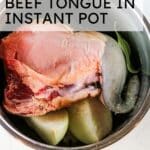
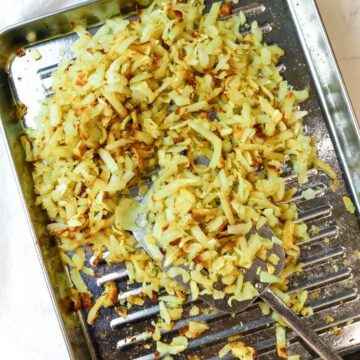


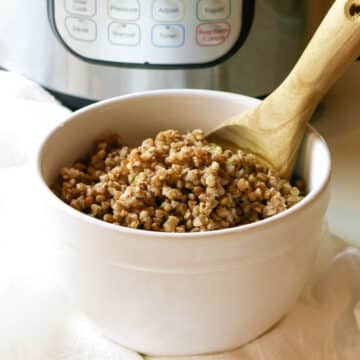


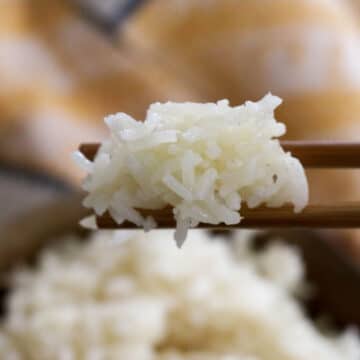

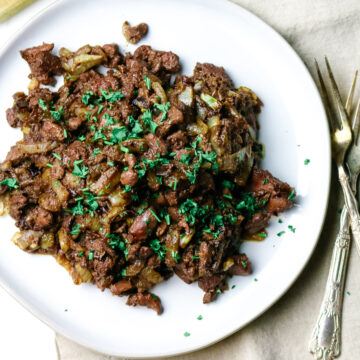
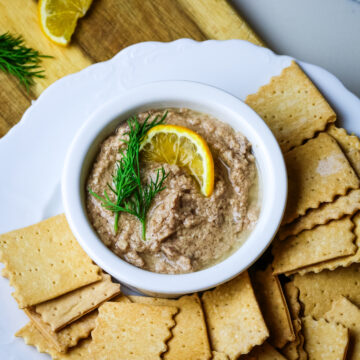
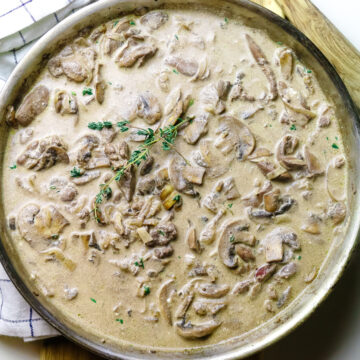

Miz Helen says
This is an outstanding tutorial and presentation for this recipe. Your Tongue appetizer would be very different and delicious.
Anya says
Thanks Miz Helen for your sweet comment.
Emily @ Recipes to Nourish says
I have never had tongue before, but love how your tutorial on how you prepare it.
Anya says
Oh, you gotta try beef tongue! It actually tastes a lot like steak...if you can get past the whole 'tongue' part, lol 🙂
Babykitted says
My husband wants me to try this beef tongue appetizer and I am glad I found this tutorial. I will surprise him this coming Sunday, I can't wait! Thank you!
Sarah Harding says
Wow- your incredible photography makes such an intimidating food look approachable. Well done. I have no doubt it tastes as great as it looks!
Anya says
Thank you Sarah for your kind words. 🙂